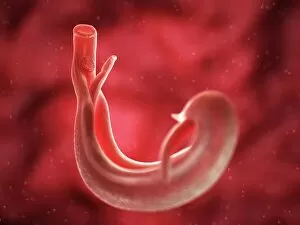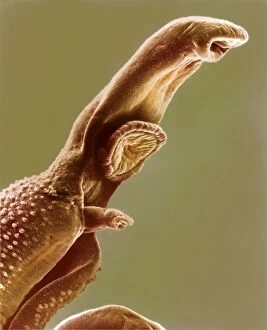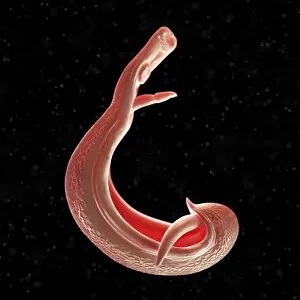Schistosome Collection
Schistosomes, also known as Schistosoma spp. Blood flukes, are fascinating parasites that have a significant impact on human health worldwide
All Professionally Made to Order for Quick Shipping
Schistosomes, also known as Schistosoma spp. Blood flukes, are fascinating parasites that have a significant impact on human health worldwide. These microscopic creatures belong to the class Trematoda and are responsible for causing schistosomiasis, a neglected tropical disease affecting millions of people. The intricate artwork F005 / 0594 depicts the detailed structure of a Schistosome fluke, showcasing its unique features and complex life cycle. Similarly, scanning electron micrographs provide an up-close view of these parasites in action, revealing their specialized adaptations for survival. Artworks such as F005 / 0588, F005 / 0596, F005 / 0590, F005 / 0593, F005 / 0591 and F005 / 0592 beautifully capture the diversity within the Schistosome genus. Each species has distinct characteristics that enable them to infect specific hosts and inhabit various environments. These blood flukes have a remarkable ability to penetrate human skin when individuals come into contact with contaminated freshwater habitats where they reside. Once inside the body, they migrate through blood vessels towards organs like the liver or intestines. Schistosomiasis can lead to severe health complications if left untreated. Chronic infection may cause organ damage and impair growth in children while increasing susceptibility to other diseases like HIV/AIDS. Efforts to control this parasitic disease involve preventive measures such as improving sanitation facilities and providing access to safe water sources. Additionally, mass drug administration programs aim at treating infected individuals with praziquantel—an effective medication against schistosomiasis. Understanding the biology of Schistosomes is crucial for developing innovative strategies against this persistent public health issue. Ongoing research seeks new diagnostic tools and vaccines that could potentially eliminate schistosomiasis once and for all. These captivating images highlight both the beauty and complexity of Schistosomes—tiny yet impactful parasites that continue to challenge global health systems.


















